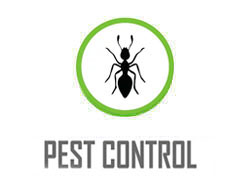How to Keep Squirrels Out During Winter
There are few things cuter than a little squirrel sitting at the base of a tree eating a nut in summer. But what do they do when the weather turns cold?
Squirrels are part of a large and varied family and are found throughout the world, from deserts to rainforests and everywhere in between. There are approximately 279 different types of squirrel species worldwide, including tree squirrels, ground squirrels, and flying squirrels, and each one survives winter in a different way, depending on the species and climate.
WHY DO SQUIRRELS STAY IN OUR ATTICS DURING THE WINTER?
As squirrels prepare for winter, they search for the perfect den site to stay warm and horde their nuts. Squirrels most commonly stay in hollowed out trees or burrows to survive the cold weather that winter brings, however, with hundreds of squirrels in every community, natural den sites are claimed quickly, leaving squirrels in the search for a warm place to survive winter. As they smell warm winter meals and feel the warm air escape from your home, many squirrels are tempted to make a den inside.
Attics, sheds, and garages are tempting nesting sites, but the most common place squirrels prefer to create a den inside a home is in the attic. Its height provides easy access away from predators and human activity, and the insulation inside acts as a conveinty blanket to hide from the cold air.
HOW SQUIRRELS SURVIVE WINTER
Being such a varied group, living in so many different climates, squirrels have developed many strategies for survival. Tree squirrels and flying squirrels remain active all year and, instead of hibernating, they rely on shelter, fat reserves, and stockpiles of calorie-rich nuts and seeds, to make it through the winter.
During severe cold weather, most squirrels stay in their nests for several days at a time and also change their daily routines. They no longer forage mainly in the early mornings and evenings but venture out at midday when it is marginally warmer. Since nuts are in short supply in the winter, squirrels will supplement their diet by foraging for insects, bird’s eggs, and mushrooms.
The eastern gray squirrel, found in southern Canada, starts hoarding nuts in fall and burying them in various caches, a technique known as “scatter hoarding”. It bites and licks each nut, and during the winter the squirrel uses memory and a keen sense of smell to retrieve its hoard.
The southern flying squirrel, found in south-east Canada, relies on the benefit of shared body heat to stay warm in winter. They nest in groups and venture out every few days to feed on seeds, hickory nuts, acorns, and wild cherry pits.
PREVENTION IS BETTER THAN CURE
Regardless of whether squirrels hibernate or not, just like us, these little guys need a warm place to call home during the winter. Attics, sheds, and garages are tempting nesting sites. Even if they don’t actually move into your home, squirrels might see it as an ideal storage place for their food cache. Neither situation is ideal.
Some reasons that squirrels are not good house guests are:
- they carry diseases
- their feces and urine can pose a health risk to your family
- their food stores can contain, or attract, insects and parasites
- and they can cause significant damage to your home, including chewing through electrical wires
Since both squirrels and people are less active in winter, it can be harder to spot squirrel activity on your property. To ensure that your home is safe from squirrel intruders it is essential to have a wildlife prevention strategy. It is impossible to entirely eliminate squirrels from your property but you can make it less attractive for them.
Here are some basic steps you can do:
- Eliminate the things that attract squirrels to your property – don’t leave bowls of milk outside for your cat and either remove all bird feeders or move them away from your house.
- Secure all potential entry points – identify and repair any cracks and holes that a squirrel might sneak through.
- Use the correct materials for squirrel proofing – conventional building materials are no match for an opportunistic and determined squirrel so you need to install heavy gauge screening to seal any openings.
HOW SKEDADDLE KEEPS YOUR HOME SQUIRREL FREE
So, you’ve taken all the steps to prevent it, but you still have a squirrel in your home for the winter. That means it is time to call in the professionals. Skedaddle Humane Wildlife Control can provide you with a quick removal and humane wildlife prevention strategy getting back inside.
Skedaddle technicians will install a temporary one-way door to allow the squirrel to exit without the ability to return. We then seal every potential entry point with galvanized steel screens to prevent them from even getting back inside in the future before removing the one way door. Call today to find out what we can do for you! 1.888.592.0387.
CALL US TODAY
1.888.592.0387
OR
Request for Services







FOLLOW US